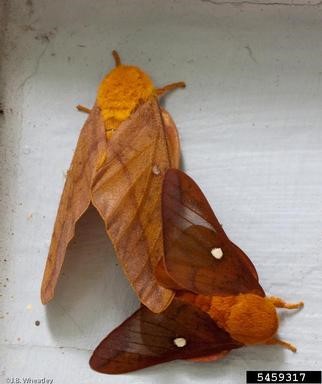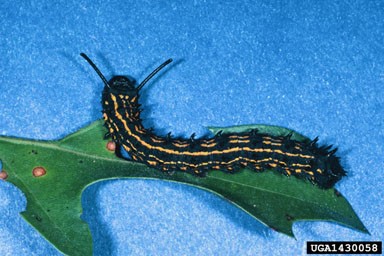Get ready! In the next couple of months, we are going to start seeing evidence of the caterpillars of this moth, the orangestriped oakworm. During mid-June to mid-July, the adults (Figure 1) emerge from their underground pupal cells. Mating occurs during the day and females will begin to lay large clusters of eggs on the underside of oak leaves, preferably red oaks. The larvae are gregarious at first but then disperse up the tree. Unless you see the first instar larvae, the only evidence of their presence will be frass (droppings) on the ground. This especially noticeable when the feeding site is above a street, driveway, or sidewalk.
The larvae will feed throughout August and early September. As the larvae reach their last stage before pupation, they will devour a large amount of leaves, creating some obviously defoliated areas. Because the feeding occurs so late it the year, there is minimal damage to the tree. (Figure 2)
Figure 1
When ready to pupate, the larvae will crawl down the tree. This is when most people catch their first glimpse of what was feeding on their oak trees. The larvae wander about looking for a protective place in which to pass the winter. They then form the overwinter-ing pupa. There is one generation each year.
Figure 2
Kenneth R. Ahlstrom, Ph. D., Entomologist, Economy Exterminators, Inc.
Picture Credits: Figure 1 – John Wheatley, Bugwood.org; Figure 2 – Lacy L, Hyche, Auburn University, Bugwood.org






